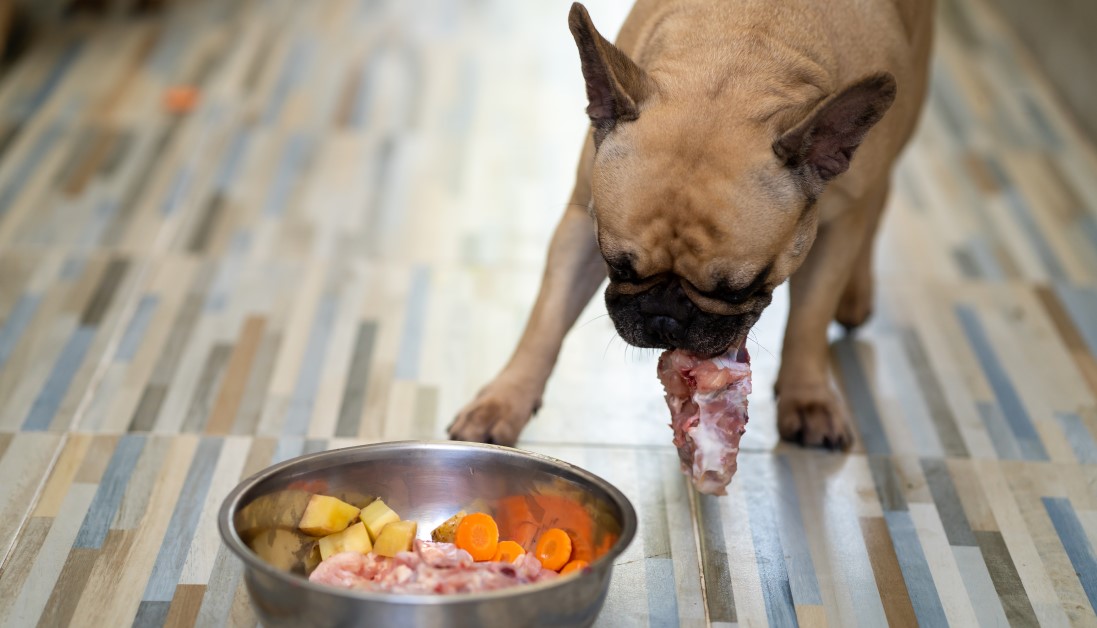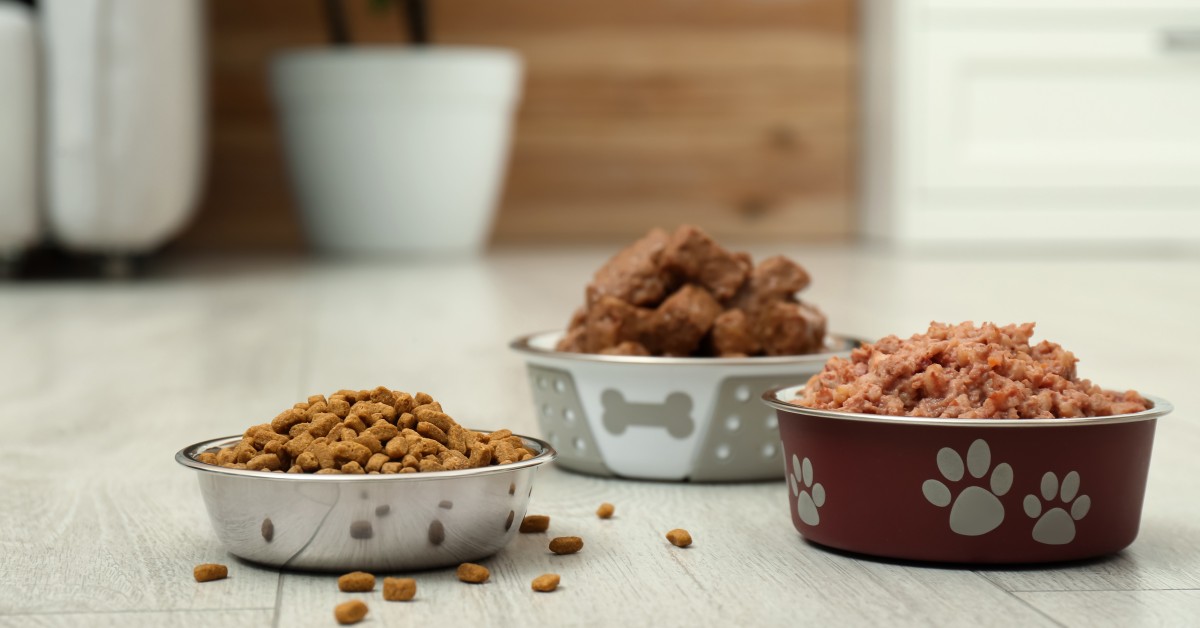Is a Raw Food Diet Best for Your Pet's Health
Explore the potential benefits and risks of raw diets to determine if they are the right choice for your pet.

The raw food diet movement is capturing the attention of pet owners who desire a more natural approach to feeding their furry companions. Many advocates claim that a raw food diet consisting of raw meat, organs, bones, and the occasional vegetable can boost energy levels, enhance coat condition, and improve overall health. However, with these benefits come potential risks. Let’s take a closer look at the raw food diet to help you decide if it’s right for your dog or cat.
What Is Raw Pet Food and How Does It Differ from Commercial Pet Food?
Often referred to as “BARF” (Bones and Raw Food), a raw pet food diet consists of feeding cats and dogs unprocessed, natural foods rather than commercial pet foods, such as dry kibble.
What makes raw dog food or raw cat food different from their commercial counterparts is the ingredients and the way they’re processed. Commercial pet foods are generally processed at high temperatures, which can reduce nutrient levels. In addition, commercial foods often contain fillers, preservatives, and artificial additives, while a raw pet diet focuses on the use of whole, natural ingredients.
Benefits of a Raw Food Diet for Dogs and Cats
There are several key advantages of raw pet food, including:
Improved Skin and Coat Health
Pet owners who switch their cat or dog to raw food often notice improvements in their pets’ coat and skin health. Raw diets are often rich in essential fatty acids, such as omega-3s and omega-6s, which are important for maintaining a shiny, healthy coat and hydrated skin.
Enhanced Digestion
Raw diets can contribute to better digestion due to the absence of filler materials and artificial ingredients. Their high moisture content also helps keep the digestive tract hydrated, which facilitates smoother digestion and nutrient absorption.
Increased Energy Levels
A boost in energy and vitality is often seen in pets who eat a raw diet. The reason behind this concept is the readily available nutrients in raw diets compared to highly processed pet foods.
Better Dental Health
Chewing on raw meaty bones can be beneficial to your pet’s dental health as bones mechanically clean the teeth, reduce plaque and tartar buildup, and stimulate the gums. The act of chewing can also be good for mental health as it helps alleviate boredom.
Potential Risks of a Raw Food Diet for Dogs and Cats
While there’s no denying that a raw diet can promote good pet health nutrition, there are some risks of raw pet diets, including:
Nutritional Imbalances
One of the biggest concerns pet owners have regarding raw diets deals with nutritional imbalances. Both cats and dogs require a proper balance of fats, proteins, vitamins, and minerals to maintain optimal health. When a raw diet is improperly formulated, it can lead to harmful deficiencies or excesses of certain nutrients.
Bone Hazards
While it’s true that bones offer dental benefits, they also pose potential hazards. Hard bones can cause broken teeth or create a choking risk, especially if they are not properly sized for the pet. When they splinter, bones can create sharp fragments that lead to internal injuries or blockages in the digestive tract.
Pathogen Risks
Feeding pets raw meat comes with the risk of bacterial contamination. Pathogens, such as salmonella and E. coli, can lead to foodborne illnesses. This risk doesn’t just impact pets but also any humans who handle these foods.
Cost and Convenience
The cost of a raw diet must also be considered when making a decision about which diet is best for your pet. Raw diets can be significantly more expensive than commercial pet foods. In addition, they are typically more time-consuming to prepare.
Making an Informed Decision About Your Pet’s Diet and Health
When it comes to choosing the best diet for your pet, there is no right or wrong answer. Each pet is unique and what they need nutritionally will depend on a variety of factors, such as their breed, age, size, and overall health. When approaching the topic of a raw food diet, take the following steps:
Consult with a Veterinarian
Before altering your pet’s diet, speak with your veterinarian. Your vet can help you better understand the nutritional requirements of your pet and assess whether a raw food diet is a suitable option.
Transition Slowly to a Raw Food Diet
If you decide to try a raw food diet, take the transition slowly to avoid digestive upset. Begin by introducing small amounts of raw food into your pet’s existing diet, and gradually increase the proportion of raw food over several weeks.
Continue to Monitor Your Pet
Not all pets will respond well to a new diet. It’s important to continually monitor your pet’s health during and after the transition to see if the change has had any adverse side effects. Look for changes in your pet’s coat condition, stool quality, energy levels, and overall behavior.
Is a Raw Diet Best for Your Pet? Weigh the Pros and Cons
While switching to a raw diet can be highly beneficial for many pets, it also presents several risks that should not be overlooked. Ultimately, the best choice for your pet will be one that balances their nutritional requirements with your ability to properly manage their diet and maintain their health and well-being.
Ready to start saving money on pet wellness care?
Then take a look at Mint Wellness, the pet wellness plan that provides fast reimbursement on routine pet care. Save on vaccinations, wellness exams, preventatives, dental, and more!
Learn More
